#hypericum punctatum
Explore tagged Tumblr posts
Text
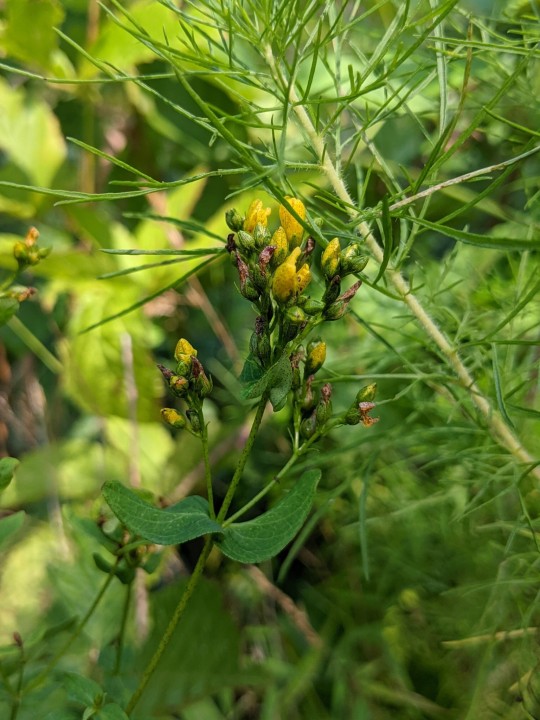
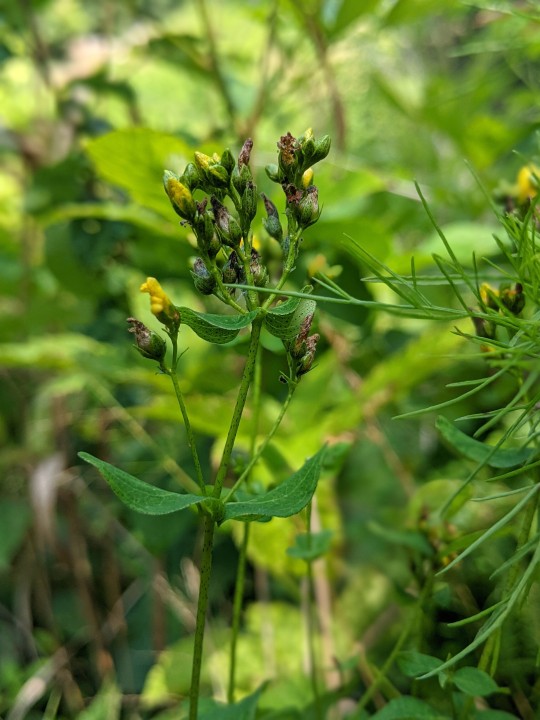
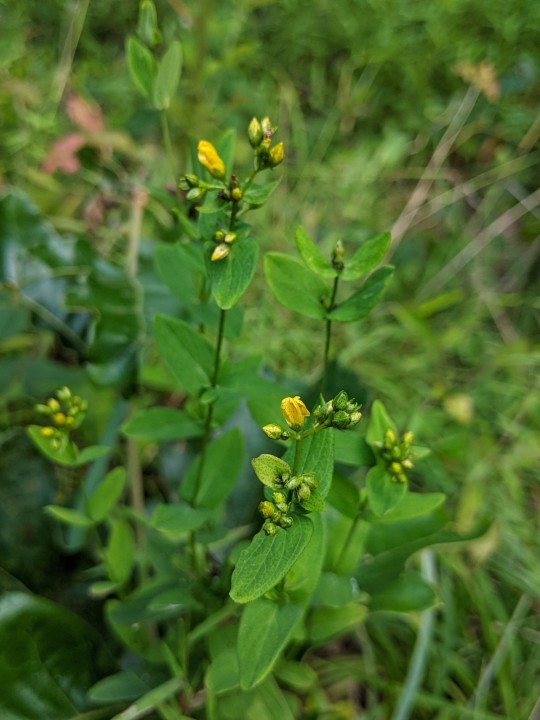

Spotted St. John's Wort - Hypericum punctatum
#plant id#wildflowers#native plants#medicinal plants#hypericum#hypericum punctatum#st john's wort#spotted st john's wort#saint john's wort
35 notes
·
View notes
Text
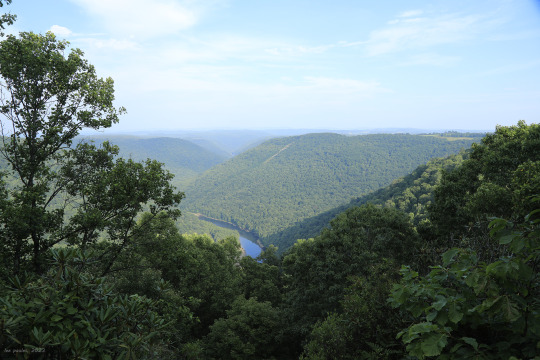

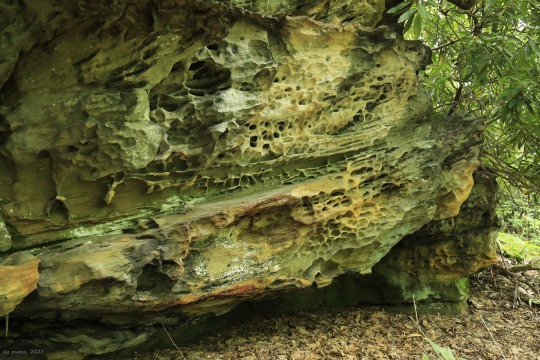

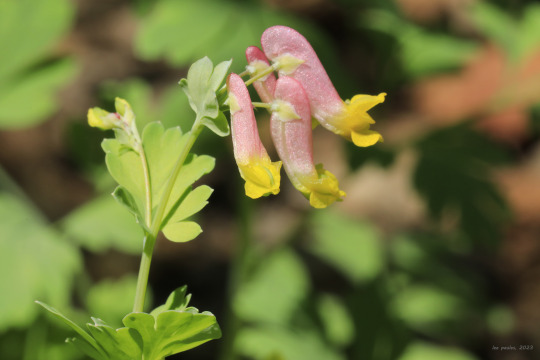
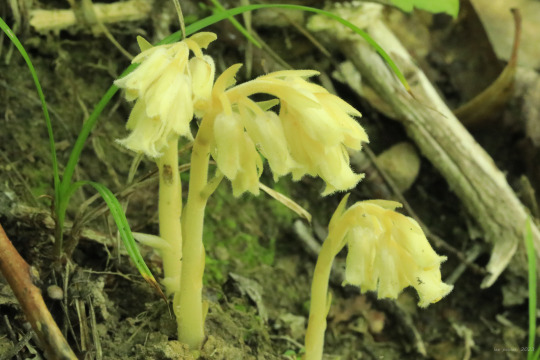


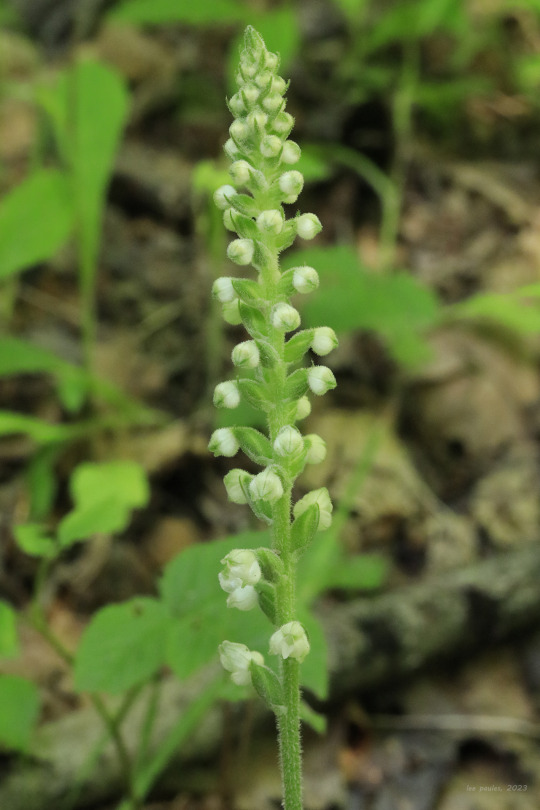
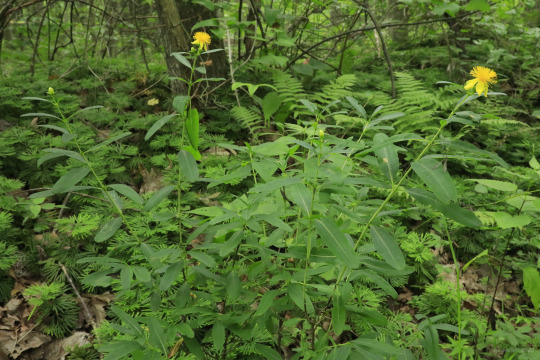






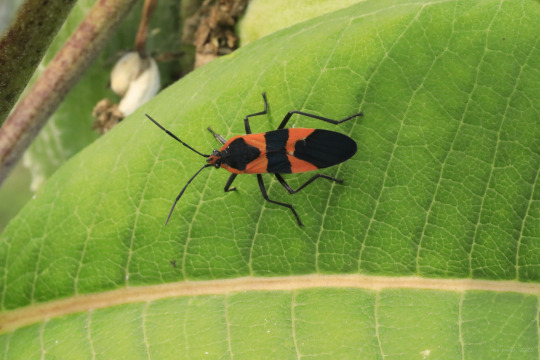
A hike in the Cheat River Canyon on a hazy, mid-summer day brings a great many rewards, both large and small.
From top: Fractured and pitted sandstone gives testimony to the canyon's ancient struggle with the elements; black cohosh (Actaea racemosa or Cimicifuga racemosa), whose towering flower spikes stalk the old woods like magical beings; the colorful rock harlequin (Corydalis sempervirens), an endangered fumitory that haunts the canyon's rocky outcrops; pinesap (Monotropa hypopitys), a parasitic plant closely related to Indian pipe; spotted St. John's wort (Hypericum punctatum), which is distinguished from the invasive St John's wort (Hypericum perforatum) by the numerous black dots on its flowers and leaves; downy rattlesnake plantain (Goodyera pubescens), a shade-tolerant terrestrial orchid that favors oak-hickory woods; shrubby St. John's wort (Hypericum prolificum), a mounding, deciduous shrub of open, sandy woods; orange-fringed orchid (Platanthera ciliaris), a stunning late summer beauty of Appalachia's moist meadows and open woods; a hummingbird clearwing moth (Hemaris thysbe) visiting a late-blooming milkweed; a silvery checkerspot (Chlosyne nycteis) drinking up the nectar of a butterfly milkweed (Asclepias tuberosa); an American green crab spider (Misumessus oblongus) stalking a black-eyed Susan for its next meal; a large milkweed bug (Oncopeltus fasciatus) being perfectly beautiful on a lazy summer day; and last but not least, a hulking patch of eastern Jack-0'-lanterns (Omphalotus illudens), which contrary to what field guides say have never glowed in the dark for me (I love the toxic little beauties nonetheless).

#appalachia#vandalia#west virginia#wildflowers#flora#summer#snake hill wildlife management area#cheat river canyon#chestnut ridge#fungi#insects#orchids#black cohosh#rock harlequin#pinesap#spotted st. john's wort#downy rattlesnake plantain#shrubby st. john's wort#orange-fringed orchid#hummingbird clearwing moth#silvery checkerspot#butterfly milkweed#american green crab spider#large milkweed bug#jack o' lantern#lepidoptera
174 notes
·
View notes
Text
So most of the plants that began showing signs of life in April last year are doing so now, but I am still waiting on:
Adiantum pedatum (maidenhair fern) Aruncus dioicus (bride's feathers) Asclepias viridiflora (green comet milkweed) Cardamine concenata (cutleaf toothwort) Cardamine maxima (large toothwort) Claytonia virginica (fairyspuds) Clinopodium vulgare (wild basil) Comptonia peregrina (sweetfern) Echinacea purpurea (purple coneflower) Epilobium cilliatum (fringed willhowherb) Galium boreale (northern bedstraw) Hypericum punctatum (spotted St. John's wort) Lathyrus ochroleucus (cream pea vine) Mertensia paniculata (tall bluebells) Monarda fistulosa (wild bergamot) Pycnanthemum tenufolium (slender mountain mint) Ratibida pinnata (greyheaded coneflower) Solidago nemoralis (grey goldenrod) Symphyotrichum ericoides (white heath aster) Trillium cuneatum (little sweet Betsy) Viola blanda (sweet white violet) Viola canadensis (Canada violet)
And we'll see if any more of the new ones show themselves this month. I suppose I should also track whether it's early in the month, the middle of the month or late in the month.
10 notes
·
View notes
Text
Spotted St. Johnswort (Hypericum punctatum Lam.)
Clusiaceae (Mangosteen Family) Base Flower Color: YellowReproductive Phenology: Jun, Jul, Aug, Sept For more information about this plant, Click Here.

View On WordPress
0 notes
Text
okay my mix will be american lotus for in the pond, a few pickerelweed (bc they can go nuts and take over a space so only a couple), swamp thisle, joe pye weed, cardinal flowers, marsh smartweed, marsh marigolds, turtleheads, and a bit of sneezeweed for further up the bank
man i cant wait for this to come in the mail
hmm but it looks like this area is gonna take the brunt of the sun come summer should i maybe include some species that like a medium soil just in case? like common milkweed?
Edit: wait nevermind i have dotted st johns wort (Hypericum punctatum) can use against the fenceline
well my douche town has clear cut a large strip along the edge of the local pond... time to buy some water loving planties and fix that (native of course!)
5 notes
·
View notes
Photo



Hypericum punctatum Spotted Saint Johns Wort,
This year had many new ones for me, and this “tar spotted” freckled leaf and bract having native with its almost erect new leaves hyped me up this July.
I actually found this species at a potential prairie remnant (may or may not be an undocumented remnant or seeding) that a few of people who work for records have told me to not call a “remnant” yet.
I don’t think this species is sewn often into these road side sites so it gives me hope that it may be an area of research if it turns out to be truely a remnant.
“if its not a remnant they did a good job with the seed mix” -Dan Boone
13 notes
·
View notes
Text

Spotted St. Johnswort, Hypericum punctatum. It has small flowers with little black dots.
This one possibly has a spider waiting to feed on its pollinators?
#spotted st johnswort#hypericum#Hypericum punctatum#could be pseudomaculatum?#but i think i’m right#spider
53 notes
·
View notes
Photo

Spotted St. John's Wort, Hypericum punctatum (by me)
#Spotted St. John's Wort#Hypericum punctatum#Hypericum#Hypericoideae#Hypericaceae#Malpighiales#flowers#plants#summer#Negri-Nepote Native Grassland Preserve#Somerset County#New Jersey#mine
14 notes
·
View notes
Text

Alright two down, eleven to go. The St. Johns wort arrived today, at least one species of it. I got two different species because one, punctatum produces more hypericum than perferatum, is the other species I got. And two, because I heard that hypericum punctatum dose better shade than hypericum perferatum. And since one if my container gardens gets more dappled sunlight than the others which get full sun, i thought it would be cool to have two different species for the different gardens. However, im stressing a bit because from what I’ve read, some sources say to plant in the fall while others say to plant in the spring. Same with the calendula which I got yesterday. So im agonizing on whether or not i should plant them now or later. If someone with experience with these plants sees this post, id like to know what you think, or rather would suggest I do. For now I think I’ll put them in now and hope they have time to get established so next year they’ll be at their best.
P.S: I honestly wasn’t expecting them to be so small. Kinda makes me even more anxious about them since I’ve got relatively big hands.
2 notes
·
View notes
Photo

20190902 MP241.1 Doughton Park Blue Ridge Parkway North Carolina
Spotted St. John’s Wort Hypericum punctatum
0 notes
Photo

Rewind to high summer, when the hypericum punctatum (gorgeous native spotted St. John's wort) was open-face to the solstice sun, when the catnip grew up past my waist, the Queen Anne's lace was everywhere, and the wild purple raspberries berried far and wide. ~~~~~~~~~~~~~~~~~~~~~~~~~~~~~~~~~ I spend a good portion of every winter planning out the harvest calendar for the coming spring, summer, and fall. St. John's wort is absolutely what I look forward to the most out of everything. We use both organically cultivated and wildcrafted St. John's wort in our oils and extracts, both Hypericum perforatum and punctatum, the European and the native varieties. I love them both. ~~~~~~~~~~~~~~~~~~~~~~~~~~~~~~~~~ First and in the greatest volume, perforatum, and secondly and only when a particular abundance arises, punctatum. I think of the differences between perforatum and punctatum as a child raised amidst many siblings and that same child raised as an only. One grows between, among, beside, within, its brothers and sisters, clumping together comfortably in their familial thick-skinned woodiness, shoving each other with laughing limbs and sharing nutritional resources as much as quibbles, strong in numbers, and unafraid of high sun or wind. The other, the only, seeks out the solitude and inversion it knows, rooting itself into trailsides and mossy banks, holding its peers at a distance and waving to them daintily from its awkward, skinny heights. ~~~~~~~~~~~~~~~~~~~~~~~~~~~~~~~~~ Perforatum is a happy-go-lucky child of the sun, and punctatum a shy offspring of the forest. Medicinally, most books will tell you they may be used interchangeably. Of course, this may be true. Of course, there are always subtle differences between the species, not the least of which is determined by their different growing conditions, one an onlooker in an open field, and one the observer of a shadowy woodland. One is perforated, the other punctured. Both holy (pun intended). http://bit.ly/2tmUrkp
0 notes
Text
“There are many ancient superstitions regarding this herb. Its name Hypericum is derived from the Greek and means ‘over an apparition,’ a reference to the belief that the herb was so obnoxious to evil spirits that a whiff of it would cause them to fly.” ~ Maude Grieve, A Modern Herbal, 1931
Tracy’s not the only person who talks about St. John’s wort as a plant to be taken very seriously. Other teachers have taught me to take care in asking permission to gather it and to be mindful of my use of it.
Permission? Permission from whom?
Permission from the plant, permission from the place. I don’t know how to explain this other than saying when I sit down in a place where I want to gather St. John’s wort (or any other plant, for that matter) after a few minutes I’ll know whether it’s OK or not. Intuition? Maybe. Or maybe it’s environmental, like when Tracy told me about crop dusting in Idaho (see St. Joan’s Wort According to Tracy Maier below). If I have any sense that it isn’t the right time, place, or plant, I move on empty handed.

St. John’s wort tea brewing in the winter sun. Commercialization of St. John’s wort products led many to believe that only alcohol extracts had any benefit, however tea and beer were used long before tinctures and concentrated extracts existed. “It happened that someone added a little Hypericum, especially if they wanted really intoxicating ale” ~ Odd Nordland, 1969
Another person told me to set my intentions when working with St. John’s wort or perhaps the spirit of the plant won’t help. Others have said that when picking a plant, I should tell the plant what I’m using it for so that it knows how to help me. What this tells me is that mindfulness is part of the process of gathering wild plants and making concoctions from them. Mindfulness is part of the medicine.
This reminds me of a student who brought me some herbs. She got out of her car, pulled a bundle of herbs from the back seat. Then as she approached she was whipping the plants around while complaining of her spouse. Hmmm, I thought.
Another lesson: herbalism is about relationship. Something to contemplate in these dark days of winter.
I recently wrote about St. John’s wort for an online class, but as you can see I have more to say. For instance, this year I made two batches of St. John’s wort tincture. The first was made from Hypericum perforatum, common St. John’s wort. Tracy taught me to find it in clear cuts in the Pacific Northwest. When a forest is cut or land is disturbed, a tribe of wound healing weeds pop up in the first few years, reconstructing the soil, preventing erosion, healing the land. In the Rocky Mountains it is invasive, covering swaths of land preventing native plants from growing. I’ve seen herbalists kill the plants. Cattle ranchers out there worry that it will kill their cows if they eat little else, making them so sensitive to the sun that they succumb to heat and sun burns.
(Perhaps this sensitivity to the sun is how a little St. John’s wort helps me through the dark days, increasing sensitivity to the sun’s life-giving rays. A dose of liquid courage.)
Here in NE Ohio, St. John’s wort is less troublesome: coming up on roadsides, in gardens, and other disturbed places, but it doesn’t take over. I planted it at BLD farm when I first moved here. Now it shows up here and there in the gardens. Just enough to save some for tea, make a tincture, and of course a special cordial for the dark days of winter.
Hypericum perforatum with big flowers little leaves.
Hypericum punctatum with little flowers and big leaves.
This summer, a cousin to St. John’s wort appeared to heal our land, circling the barnyard where the fire happened last winter (picture on the right). The flowers are tiny and the leaves are large compared to Hypericum perforatum (picture on the left). The entire plant, including the stems, is covered in purple dots. It is aptly named spotted St. John’s wort. These purple dots are filled with a purplish-red oil that brings a vibrant color to preparations of St. John’s wort. (It’s also a clear indication that you’ve got the right plant… if your yellow St. John’s wort flowers don’t bleed red in alcohol or oil, then perhaps you’ve gathered the wrong plant.)
Hypericum punctatum before adding alcohol.
Hypericum punctatum after adding alcohol.
Spotted St. John’s wort also has perforations, though less obvious than those in the leaves of common St. John’s wort. Although some herbalists suggest that only the perforatum species is medicinal, I found that the purple dots stained my fingers the same way and it tastes the same. So I decided to tincture it and try it – I mean, it was all over the backyard how could I ignore this? Within 5 minutes the tincture turned dark purple-red, the same color as preparations made from common St. John’s wort. The scientific name of spotted St. John’s wort is Hypericum punctatum. The species name, punctatum, reminds me of the dots used in punctuation, as if my friend St. John’s wort is enthusiastically calling to me with lots of exclamation marks. (!!!)
Taste test?

Common St. John’s wort: oily, bittersweet, stimulating, slightly tannic like red wine but without the sour aspect, warming
Spotted St. John’s wort: nutty, stimulating, warming, bright, bitter, oily
Hypericum punctatum is native to eastern North America, see the distribution map here:
https://plants.sc.egov.usda.gov/core/profile?symbol=HYPU
More stories about Tracy:
St. Joan’s Wort According to Tracy Maier: http://trilliumcenter.org/2018/12/11/st-johns-wort-according-to-tracy-maier
Off With Their Head: https://trilliumcenter.org/2018/05/18/off-with-their-heads/
Making Room for Grief: https://trilliumcenter.org/2018/07/05/making-room-for-grief/
More stories about Winter and St. John’s wort:
On Being Grateful: https://trilliumcenter.org/2017/01/08/on-being-grateful/
The Art of Making Tinctures: https://trilliumcenter.org/2013/02/21/the-art-of-making-tinctures/
Herbal Safety
*This statement has not been evaluated by the FDA. This product is not intended to diagnose, treat, cure or prevent any disease.*
Don’t take St. John’s wort with any kind of medication. It has a direct interaction with some medications, especially those for anxiety and depression, and it may reduce the effectiveness of other medications. This happens because St. John’s wort clears out stagnation in the liver increasing the elimination of prescription drugs and other chemicals. It works best on depression associated with liver stagnation and use should be stopped when the stagnation has cleared. It is commonly used in salves and oils, and will be absorbed through the skin, so don’t cover your whole body or large parts of your body with it if you are concerned about interactions. It can also be used as a flower essence or as a homeopathic remedy without side effects.
Liquid Courage "There are many ancient superstitions regarding this herb. Its name Hypericum is derived from the Greek and means 'over an apparition,' a reference to the belief that the herb was so obnoxious to evil spirits that a whiff of it would cause them to fly."
0 notes
Photo



Spotted St John’s wort (Hypericum punctatum) is one of several species in the genus native to Central Appalachia. Hypericum’s common name derives from the Feast of St. John, which occurs in conjunction with the summer solstice, about the same time as several of its members begin to bloom. Punctatum is a perennial wildflower that grows in open fields and along forest margins in full sun, often in poor soil where competition from other plants is reduced. The plant is distinguished from the invasive common St John’s wort (Hypericum perforatum) by the presence of black dots and streaks along the entire surface of its yellow flower petal; perforatum only has the markings at the margins of the petal. Photos above were taken at Snake Hill Wildlife Management Area.
#appalachia#vandalia#west virginia#flora#summer#wildflowers#hypericum#st john's wort#spotted st john's wort#snake hill wildlife management area
32 notes
·
View notes
Text
More flowers from my garden!
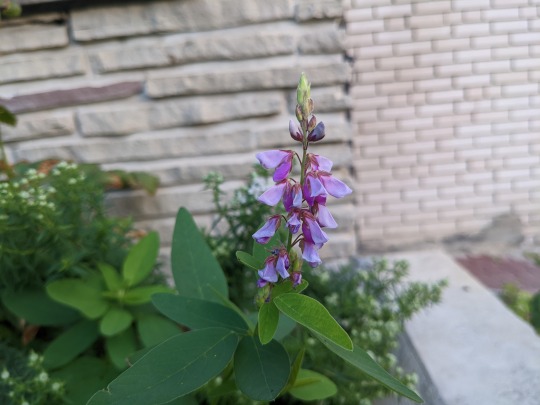
Desmodium canadense (showy tick trefoil)
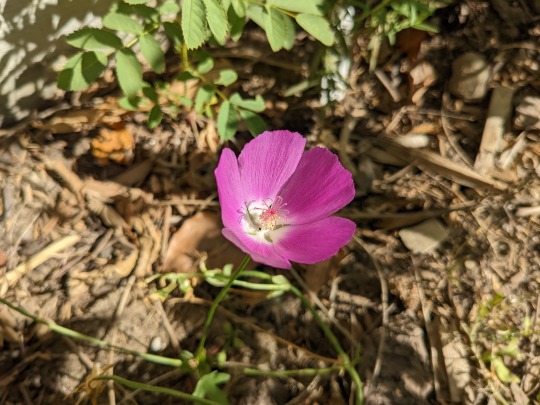
Callirhoe involucrata (purple poppymallow)

Pycnanthemum virginianum (Virginia mountain mint)
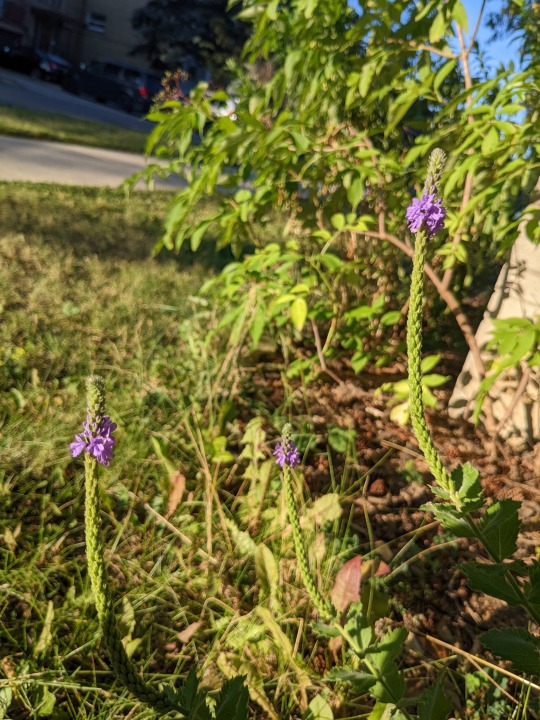
Verbena stricta (hoary vervain)

Eupatorium purpureum (sweet joe-pye-weed)

Monarda punctata (spotted beebalm)
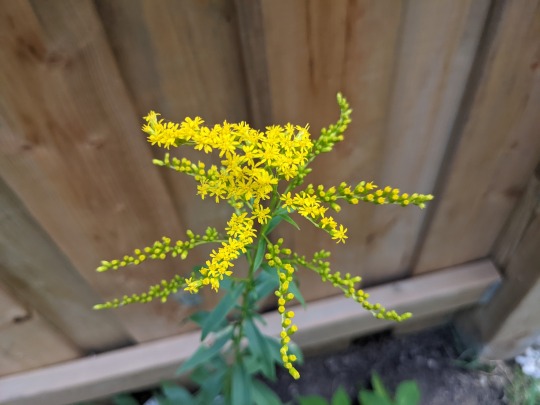
Solidago juncea (early goldenrod)
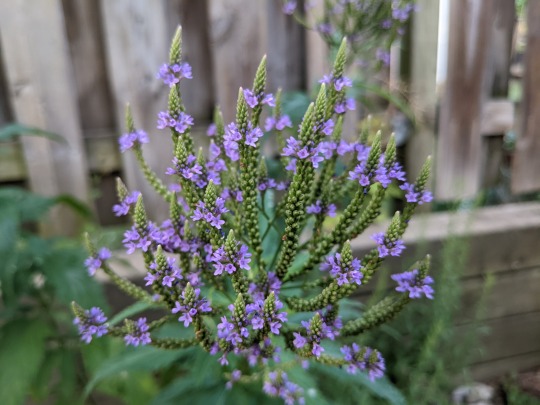
Verbena hastata (blue vervain)
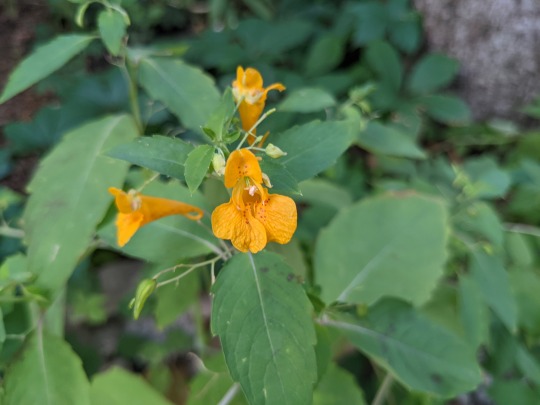
Impatiens capensis (spotted jewelweed)

Helianthus nuttallii (common tall sunflower)

Symphyotrichum ciliatum (fringed blue aster)
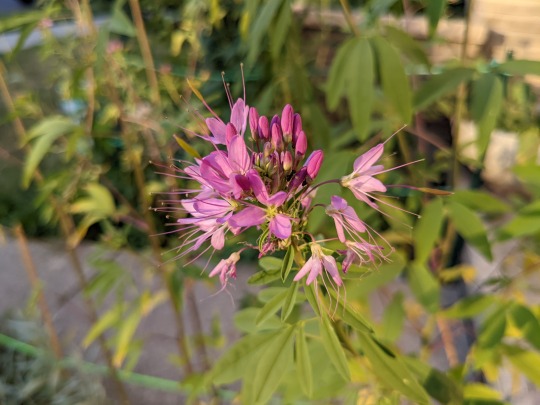
Cleome serrulata (Rocky Mountains bee plant)
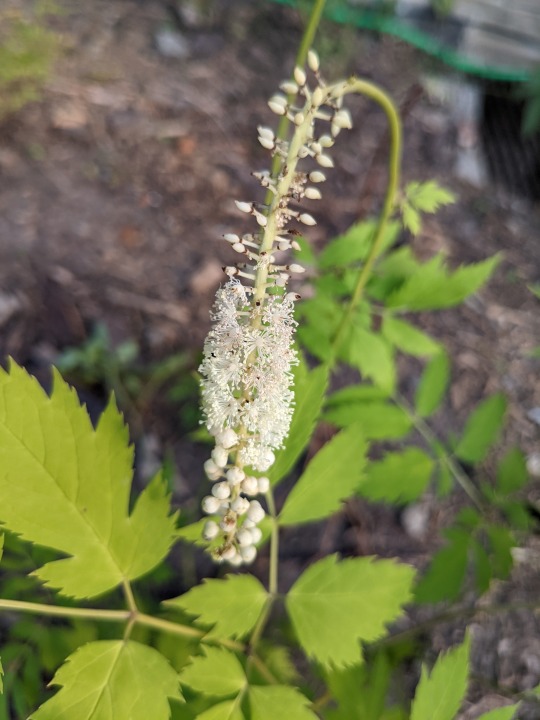
Actaea racemosa (black snakeroot)
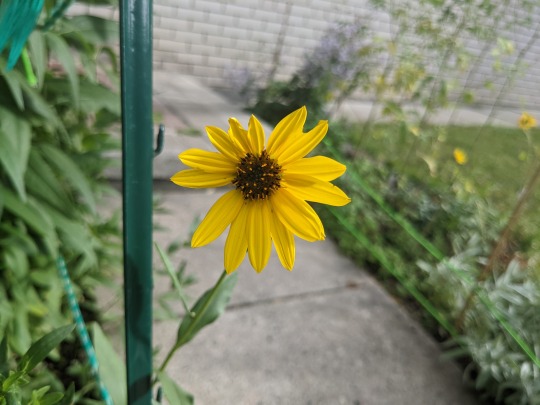
Helianthus pauciflorus (stiff sunflower)
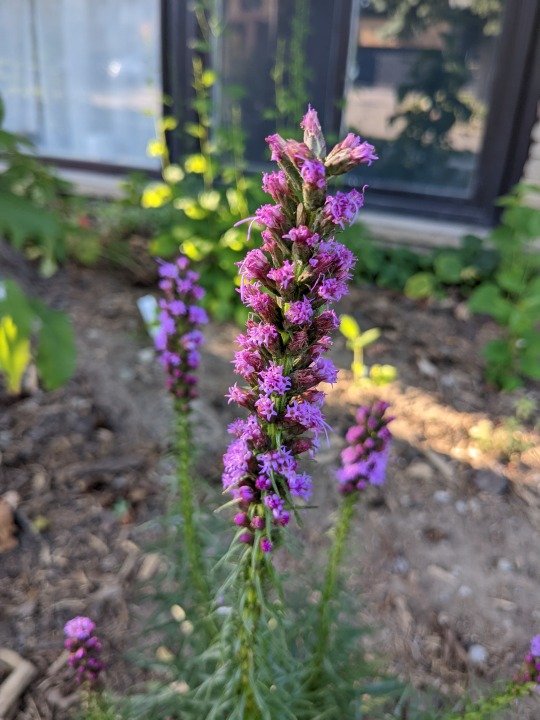
Liatris spicata (dense blazing star)

Hypericum punctatum (spotted St. John's wort)
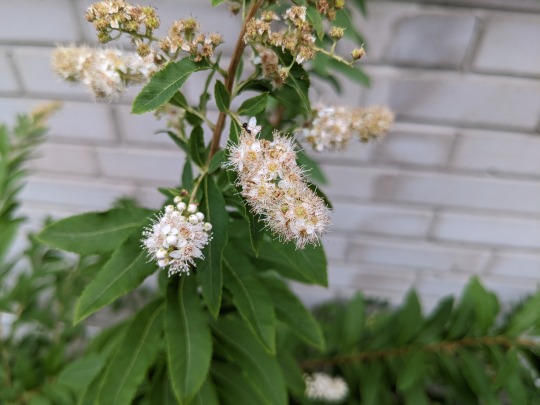
Spiraea alba (meadowsweet)
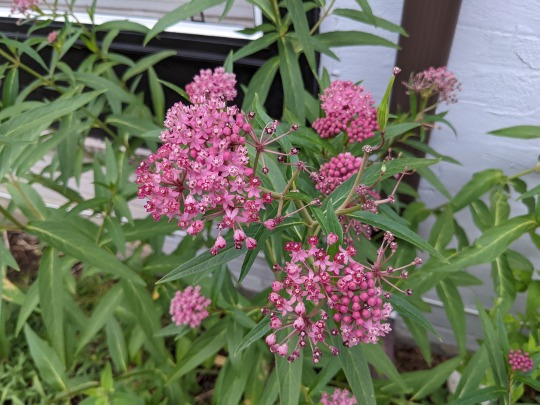
Asclepias incarnata (swamp milkweed)

Agastache foeniculum (anise hyssop)
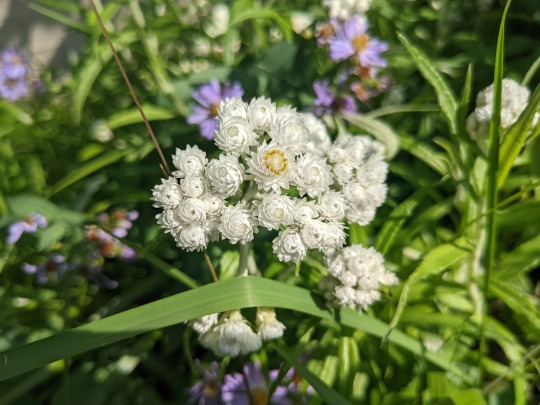
Anaphalis margaritacea (pearly everlasting)

Symphyotrichum laeve (smooth aster)
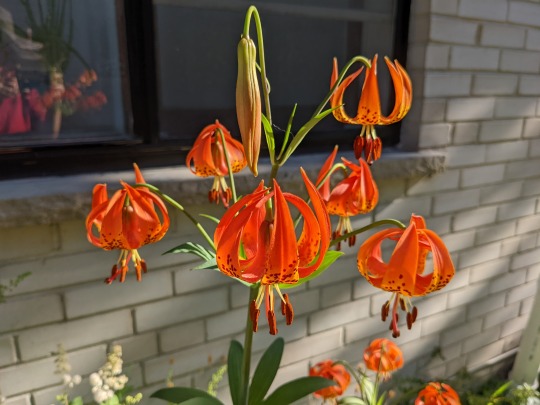
Lilium michiganense (Michigan lily)
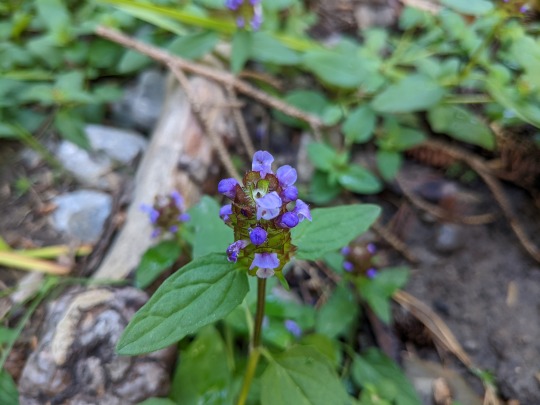
Prunella vulgaris ssp. vulgaris (common selfheal)

Symphyotrichum lanceolate (panicled aster)

Astragalus canadensis (Canada milk vetch)
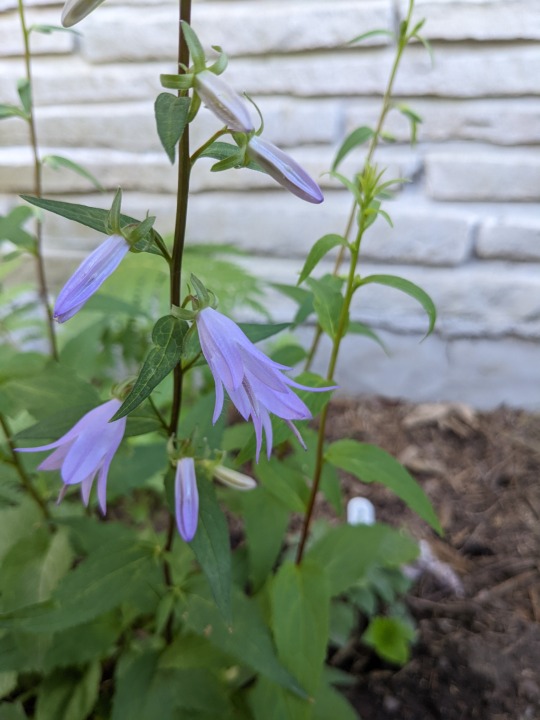
Campanulastrum americanum (marsh harebell)

Sambucus canadensis (common elderberry)

Mertensia paniculata (tall bluebells)
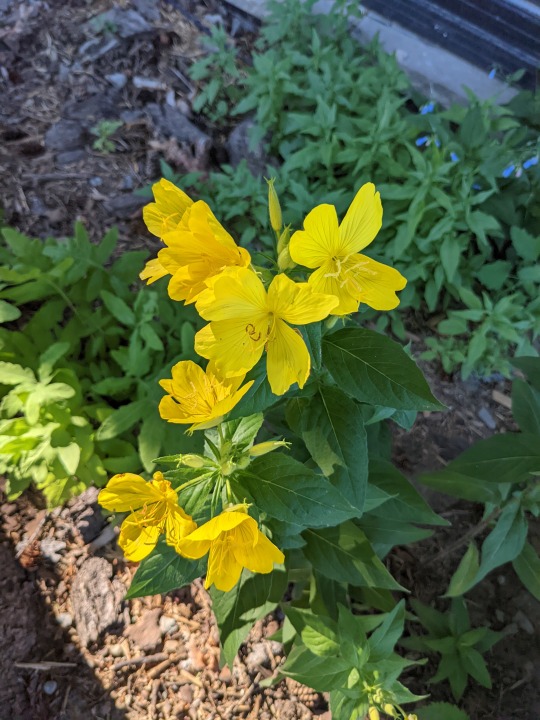
Oenothera fruticosa (narrow-leaved sundrops)

Lilium philadelphicum (wood lily)
And cut off again. lol
17 notes
·
View notes
Photo

Hypericum punctatum (spotted St John's-wort) #cokerarboretum #ncbg #northcarolinabotanicalgarden #unc #chapelhill #hypericum #hypericumpunctatum #stjohnswort #spottedstjohnswort #native #nativeflora #gffry (at Coker Arboretum)
#northcarolinabotanicalgarden#ncbg#hypericum#nativeflora#unc#gffry#cokerarboretum#native#hypericumpunctatum#stjohnswort#spottedstjohnswort#chapelhill
0 notes